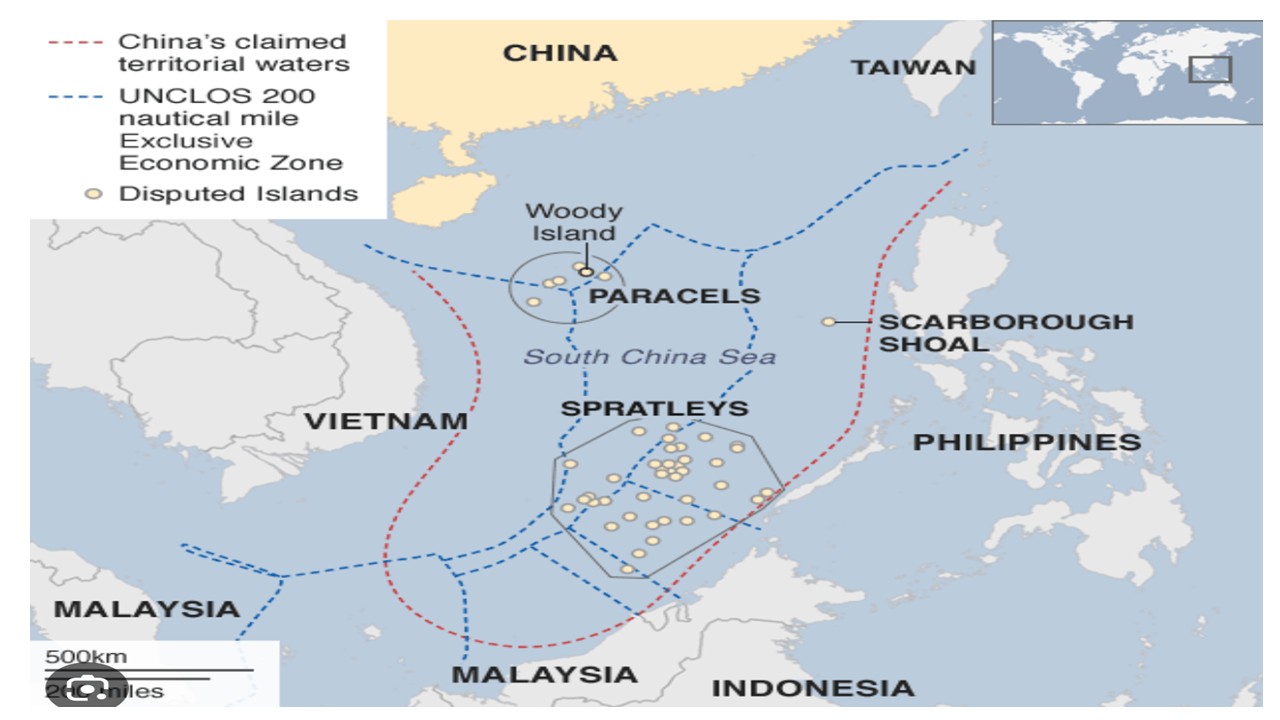China South China Sea Tensions
We see recent China activity as part of the normal grey warfare for long-term influence in the South China sea. It has involved the use of China coastguard and militia fishing boats rather than China PLA Navy, though the risk of escalation between the Philippines and China remains. China likely wants to see if Trump will trade Taiwan security for trade in any future trade negotiations, while the current tariffs against Asian countries allows a window to gain ground with Asian neighbors.
Are the latest tensions between China and the Philippines normal China grey warfare in the South China sea or a test of the Trump administration resolve in the region?
Figure 1: China South China Sea Territorial Claims

Source: BBC
China coastguard have claimed the tiny Sandy Cay island over the weekend (here), which has caused further tensions with the Philippines. One question is whether this is just normal grey warfare by China in the South China sea or whether China is trying to test the Trump administration’s willingness to get involved as a proxy for any future China/Taiwan clash.
China has many long-running territorial disputes in the South China sea (here) and has built military and aircraft bases on a number of the islands close to and in disputed territory (Figure 1). China ambitions are in terms of natural resources and fishing in the area, but of greatest importance is the huge flow of global shipping through the area and on via the straits of Malacca. However, tactical clashes from China have to be careful to avoid a strategic backlash among Asian countries, with the 2022 Philippine’s election has seen a swing back to a pro U.S. government.
The latest incident between China and Philippines looks to be a continuation of China grey warfare to push territorial claims. The use of China coastguard and militia fishing boats has occurred before and China PLA Navy has kept its distance to avoid too significant an escalation. Nevertheless, the risk of misunderstanding means that risks exist of an escalation, with the Philippines saying that the loss of life would be a red line. The Philippines has threatened to call on U.S. military support if China goes too far under the terms of the U.S./Philippines mutual defense treaty. The 1998 China/Vietnam clash over South China sea islands involved the loss of life and vessels. However, in the past the U.S. has wanted to avoid too serious an escalation and the next step would likely be a U.S. navy destroyer navigation through disputed territories – Trump did this in the Taiwan Straits in Feb 2025 (here). President Donald Trump is also anti-war and would likely seek to defuse tensions rather than escalate, especially as he wants to deescalate trade tensions with China (here).
A more worrying idea is that China could increase territorial incidents in the South China sea, to test how the U.S. will respond in case of a future China invasion of Taiwan. China PLA navy live fire exercise between Australia and New Zealand earlier this year (here) shows the growing capability of China’s navy and China willingness to flex its muscle. Even so, China likely wants to see if Trump will trade Taiwan security for trade in any future trade negotiations, while the current tariffs against Asian countries allows a window to gain ground with Asian neighbors. We would also still feel that China remains some way from military capability to invade Taiwan (here), given the difficulties of seaborne invasions. On balance, we see recent China activity is part of the normal grey warfare for long-term influence in the South China sea.